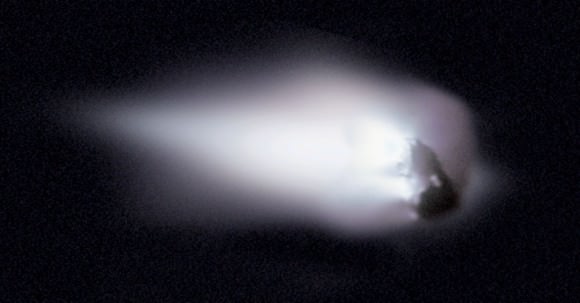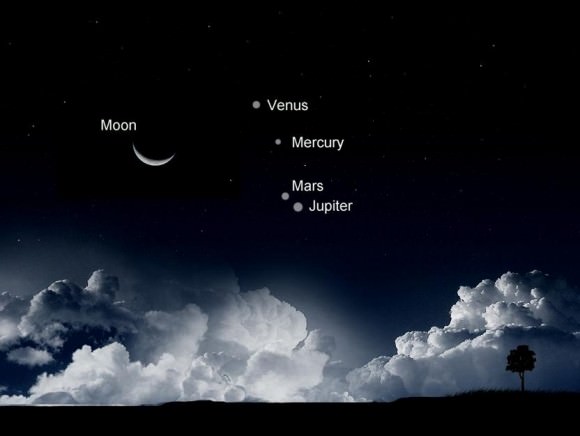The Early Morning Show – Eta Aquarid Meteor Showers While The Planets Align
Are you ready for the Eta Aquarid Meteor Shower? While the peak activity will be on the night of May 5/6, the offspring of Comet Halley are already beginning to make their appearance known. No matter where you live or what time zone you observe from, the best time to look for “shooting stars” is over the next week or so during the hours just before dawn.
Somewhere in the outer reaches of our solar system beyond the orbit of Jupiter, Comet Halley continues on its track – far away from its 1986 debris trail. However, now isn’t the only time we encounter this famous comet’s leftovers. Three times a year the Earth cruises through the dusty trail causing the Eta Aquarids, the Beta Aquarids (both in May) and the Orionids (during October). When a piece of this debris enters our atmosphere, it is traveling about 66 kilometers per second and can shine as brightly as the stars (3rd magnitude) in the constellation from which it appears to originate. Encountering a dense paticle stream may spark activity of up to 70 meteors per hour for lucky observers in the southern hemisphere, but don’t count yourself out if you live in the north! Because the constellation of Aquarius is relatively low for northern observers, this means we have at least a better chance of spotting those breathtaking Earth grazers!
Staring aound 4:00 a.m. (local time) the constellation of Aquarius is beginning to rise low to the southeast for the northern hemisphere and fall rates could be as marked as an average of one meteor every three or four minutes. Although meteors can appear from any point in the sky, your best northern skies bet will be to face generally southeast, gaze roughly halfway up the sky and get as comfortable as possible. A reclining lawn chair makes a wonderful meteor watching companion! Getting as far away as possible from city lights will also increase the amount of meteors you see – typically about 30 per hour for the northern hemisphere.
Don’t be discouraged if you’re clouded out or unable to view at the peak time. The most wonderful part about the Eta Aquarids is the fact the stream is very broad and activity is extended from April 21 until May 12. And there’s an added treat – the ongoing planetary alignment…
Don’t let anyone discourage you from watching the Eta Aquarids if you have an opportunity. While it isn’t one of the most prolific showers of the year for the north, it is very well established and having dark skies will help tremendously. There is nothing finer than cradling a cup of hot coffee, sneaking a donut and waiting on the dawn while watchingKepler’s Laws of planetary motion in action. I am sure that you’ll come away feeling very happy indeed that you took the time to look for Comet Halley’s children racing by!
Provided by Universe Today


